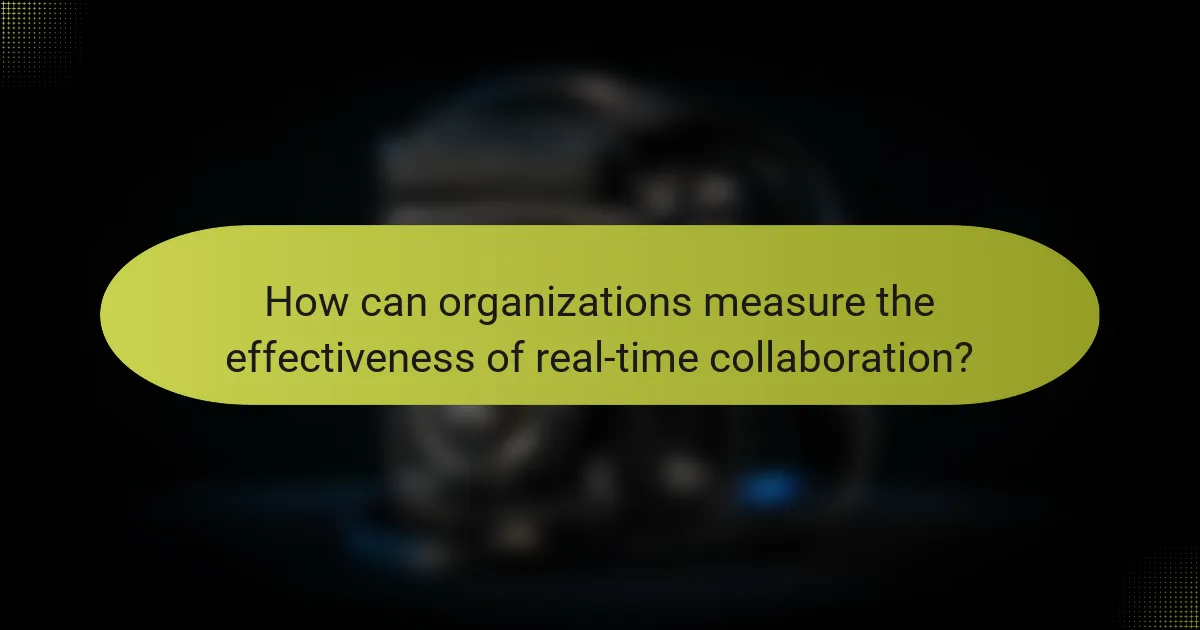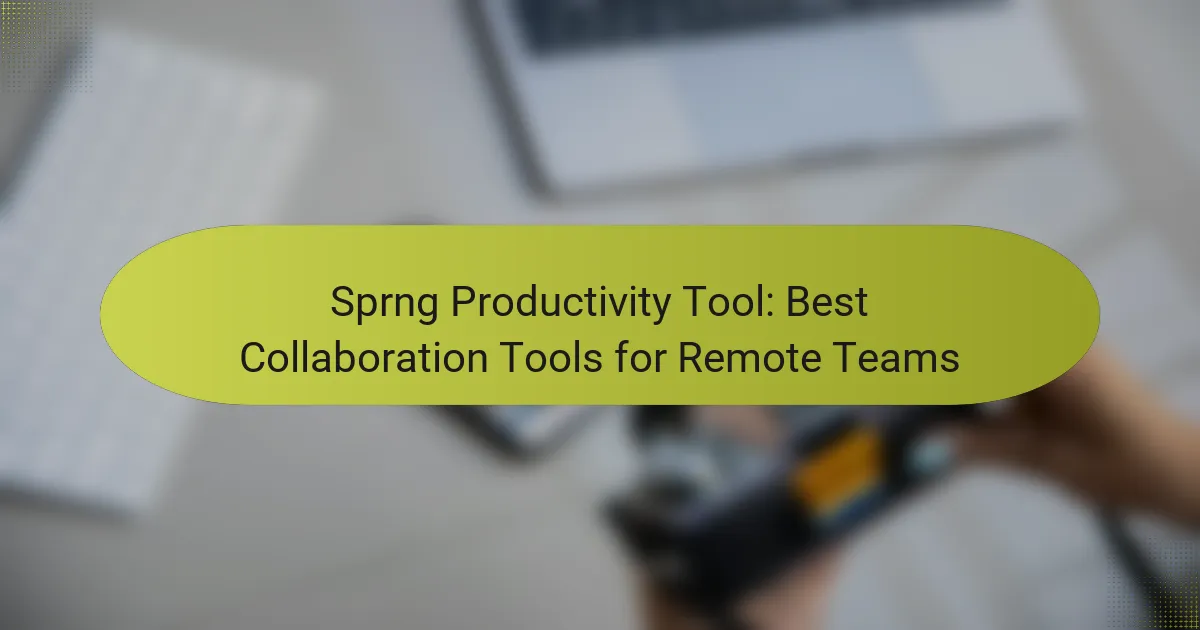Real-time collaboration plays a crucial role in boosting project success rates by facilitating immediate communication and teamwork among members. This dynamic approach enables teams to quickly address challenges, leading to more efficient execution and better overall outcomes.

How does real-time collaboration impact project success rates in the UK?
Real-time collaboration significantly enhances project success rates in the UK by fostering immediate communication and teamwork. This approach allows teams to address challenges swiftly, leading to more efficient project execution and improved outcomes.
Increased team engagement
Real-time collaboration boosts team engagement by allowing members to contribute ideas and feedback instantly. When team members feel their input is valued, they are more likely to stay motivated and committed to the project.
Tools that facilitate real-time collaboration, such as Slack or Microsoft Teams, create an inclusive environment where everyone can participate actively, leading to higher morale and productivity.
Faster decision-making
With real-time collaboration, decision-making processes are expedited, as teams can discuss and resolve issues on the spot. This immediacy reduces delays that often occur in traditional communication methods.
For example, using shared digital platforms allows teams to vote on options or brainstorm solutions quickly, enabling them to pivot and adapt strategies as needed without prolonged discussions.
Improved communication
Effective communication is a cornerstone of successful projects, and real-time collaboration enhances this by breaking down silos. Teams can share updates, documents, and feedback instantly, ensuring everyone is on the same page.
Utilizing video calls and instant messaging can clarify misunderstandings quickly, reducing the risk of errors that stem from miscommunication.
Enhanced accountability
Real-time collaboration fosters a sense of accountability among team members. When everyone can see each other’s contributions and progress, it encourages individuals to take ownership of their tasks.
Project management tools that track changes and updates in real time can help ensure that responsibilities are clear, making it easier to identify who is accountable for specific outcomes.
Higher quality deliverables
Projects that leverage real-time collaboration often yield higher quality deliverables due to continuous feedback and iterative improvements. Teams can refine their work based on immediate input, leading to better results.
For instance, design teams can use collaborative platforms to gather critiques and suggestions as they create, allowing for adjustments that enhance the final product before it reaches the client.

What tools facilitate real-time collaboration?
Several tools are essential for enabling real-time collaboration, enhancing communication and productivity among team members. These tools allow users to share information instantly, manage tasks efficiently, and streamline workflows.
Microsoft Teams
Microsoft Teams is a comprehensive collaboration platform that integrates chat, video meetings, and file sharing. It is particularly beneficial for organizations already using Microsoft 365, as it allows seamless integration with other Microsoft applications.
Teams supports real-time document collaboration, enabling multiple users to edit files simultaneously. This feature significantly reduces the time spent on revisions and enhances overall project efficiency.
Slack
Slack is a messaging platform designed for team communication, offering channels for organized discussions and direct messaging for quick conversations. Its integrations with numerous third-party apps enhance its functionality, making it a versatile tool for real-time collaboration.
With features like file sharing and searchable message history, Slack helps teams stay aligned and informed. However, managing notifications can be challenging, so users should customize their settings to avoid overwhelm.
Trello
Trello is a visual project management tool that uses boards, lists, and cards to organize tasks. It allows teams to collaborate in real time by updating task statuses and adding comments directly on cards.
While Trello is user-friendly, it may not be suitable for complex projects requiring detailed tracking. Teams should consider integrating Trello with other tools for enhanced functionality, such as time tracking or reporting.
Asana
Asana is a project management tool that facilitates task assignment, progress tracking, and deadline management. Its user-friendly interface supports real-time collaboration through task comments and project updates.
Asana’s timeline feature allows teams to visualize project schedules, making it easier to identify potential bottlenecks. Users should regularly update tasks to maintain clarity and accountability within the team.
Google Workspace
Google Workspace provides a suite of productivity tools, including Google Docs, Sheets, and Drive, which are designed for real-time collaboration. Multiple users can edit documents simultaneously, making it ideal for teams that require constant input and feedback.
With built-in chat and comment features, Google Workspace enhances communication during document creation. However, users should be mindful of sharing permissions to protect sensitive information while collaborating effectively.

What are the best practices for implementing real-time collaboration?
Implementing real-time collaboration effectively involves several best practices that enhance teamwork and project outcomes. By defining roles, establishing communication protocols, utilizing tools, and encouraging feedback, teams can significantly improve their collaboration efforts.
Define clear roles and responsibilities
Clearly defining roles and responsibilities is crucial for effective real-time collaboration. Each team member should understand their specific tasks and how they contribute to the overall project goals. This clarity helps prevent overlap and confusion, ensuring that everyone knows who is accountable for what.
For example, in a software development project, roles might include a project manager, developers, designers, and quality assurance testers. By outlining these roles, teams can streamline their workflow and enhance productivity.
Establish communication protocols
Establishing communication protocols is essential for maintaining clarity and efficiency in real-time collaboration. Teams should determine which platforms to use for different types of communication, such as instant messaging for quick questions and video calls for in-depth discussions.
Additionally, setting guidelines on response times can help manage expectations. For instance, team members might agree to respond to messages within a few hours during working hours, fostering a culture of prompt communication.
Utilize collaborative tools effectively
Utilizing collaborative tools effectively can significantly enhance real-time collaboration. Tools like project management software, shared document platforms, and communication apps should be chosen based on the team’s specific needs and workflows.
For instance, using a tool like Trello for task management allows team members to visualize progress and deadlines. Regular training on these tools can also help ensure that everyone is comfortable using them, maximizing their potential.
Encourage regular feedback
Encouraging regular feedback is vital for continuous improvement in real-time collaboration. Teams should create an environment where constructive feedback is welcomed and valued, allowing members to share insights and suggestions openly.
Implementing regular check-ins or retrospectives can facilitate this process. For example, a weekly meeting to discuss what is working well and what could be improved can help teams adapt and enhance their collaborative efforts over time.

What are the challenges of real-time collaboration?
Real-time collaboration can enhance project success but comes with several challenges that teams must navigate. Key issues include time zone differences, resistance to new technology, information overload, and difficulties in maintaining focus during collaborative efforts.
Time zone differences
Time zone differences can complicate real-time collaboration, especially for teams spread across multiple regions. When team members are working in vastly different time zones, scheduling meetings can become a logistical nightmare, often leading to delays in decision-making and project timelines.
To mitigate this challenge, teams should establish core hours when most members are available, and use scheduling tools that display multiple time zones. This approach can help streamline communication and ensure that everyone is on the same page.
Technology adoption resistance
Resistance to adopting new technologies can hinder the effectiveness of real-time collaboration. Team members may be comfortable with existing tools and reluctant to learn new systems, which can lead to inconsistent use and communication breakdowns.
To overcome this resistance, organizations should provide comprehensive training and support for new tools. Highlighting the benefits of these technologies, such as increased efficiency and improved collaboration, can also encourage team members to embrace change.
Information overload
Information overload is a common issue in real-time collaboration, as the constant flow of messages and updates can overwhelm team members. This can lead to confusion, missed deadlines, and decreased productivity.
To manage information effectively, teams should establish clear communication protocols. Utilizing project management tools to organize information and limit unnecessary notifications can help keep everyone focused on essential tasks.
Maintaining focus
Maintaining focus during real-time collaboration can be challenging, especially with distractions from notifications and multitasking. Team members may struggle to concentrate on discussions, leading to misunderstandings and reduced engagement.
Encouraging a culture of focused work is crucial. Teams can set specific agendas for meetings, designate quiet hours for deep work, and limit the use of non-essential communication tools during collaborative sessions to enhance focus and productivity.

How can organizations measure the effectiveness of real-time collaboration?
Organizations can measure the effectiveness of real-time collaboration by evaluating key performance indicators (KPIs) such as project completion rates, team engagement levels, and communication efficiency. These metrics provide insights into how well teams are working together and the impact on overall project success.
Key Performance Indicators (KPIs)
To effectively measure real-time collaboration, organizations should focus on specific KPIs. Common indicators include project completion time, quality of deliverables, and team satisfaction scores. Tracking these metrics over time can reveal trends and areas for improvement.
For instance, if a project consistently finishes ahead of schedule, it may indicate effective collaboration. Conversely, a decline in team satisfaction could signal issues in communication or workflow that need addressing.
Feedback Mechanisms
Implementing regular feedback mechanisms is crucial for assessing collaboration effectiveness. Surveys, one-on-one check-ins, and team retrospectives can provide valuable insights into team dynamics and collaboration tools. This feedback should be collected frequently to ensure timely adjustments can be made.
For example, a quarterly survey might reveal that team members find certain collaboration tools cumbersome, prompting a review of available options to enhance efficiency.
Collaboration Tools Usage
Monitoring the usage of collaboration tools can also indicate their effectiveness. Metrics such as user engagement rates, frequency of tool usage, and the number of active projects can help organizations understand how well these tools support real-time collaboration.
For example, if a project management tool is underutilized, it may suggest that team members are not fully leveraging its capabilities, which could hinder collaboration efforts.
Impact on Project Outcomes
Finally, organizations should assess the direct impact of real-time collaboration on project outcomes. This includes analyzing the correlation between collaboration practices and project success rates, such as meeting deadlines and staying within budget.
By comparing projects with high collaboration scores against those with lower scores, organizations can identify best practices and areas needing improvement, ultimately enhancing project success rates.



